Editors Pick
PAGE 16
The unique goals and challenges of Indian secularism
Updated on Nov 26, 2024 05:14 PM IST
Virtually all commentators agree that India is secular — which seems unarguable given the word’s inclusion in the Preamble
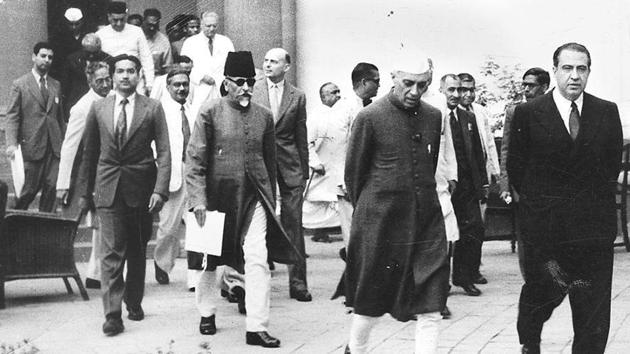
Deepa Das Acevedo
How Ambedkar, Constituent Assembly dealt with the caste conundrum
Crucial to addressing the problem of caste, the Constituent Assembly noted, was recognising that it posed a problem distinct to that presented by religion
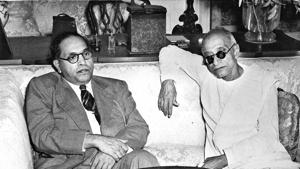
Updated on Nov 26, 2024 05:12 PM IST
Madhav Khosla
The importance of an independent judiciary, writes Madan Lokur
The freedom of the judiciary, and the top court, has been sought to be compromised on several occasions in the past. But it has always bounced back
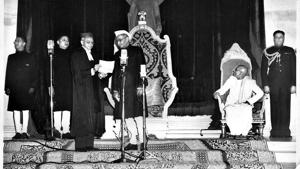
Updated on Nov 26, 2024 05:24 PM IST
Hindustan Times, New Delhi | Madan Lokur
HT Archives| Policy of controls takes away creative genius of people: GD Birla
The achievement of Indian industry thus is not small. It built itself up against heavy odds when there was no encouragement.
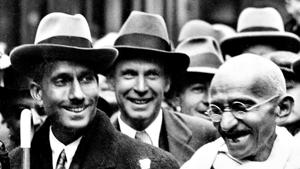
Updated on Nov 26, 2024 04:35 PM IST
Hindustan Times | GD Birla
In Partition’s shadow, Constituent Assembly adopted secular charter
Jawaharlal Nehru’s announcement in May 1942 that an elected Constituent Assembly would draft a Constitution for free India took Inder Kumar Gujral by surprise
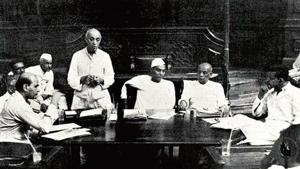
Updated on Nov 26, 2024 04:40 PM IST
Vikram Raghavan
Preamble embodies Constitution’s vision
The content of the Preamble not only embodies events that predate the adoption of the Constitution but also incorporates citizens’ experiences
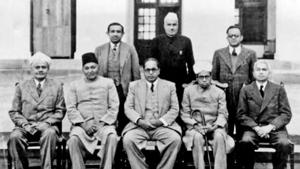
Updated on Nov 26, 2024 04:42 PM IST
Anurag Bhaskar
Machines that printed first copies of the Constitution sold as scrap
As for the lithographic plates, they were also “auctioned to scrap dealers long ago”, Survey of India (SoI) officials said.
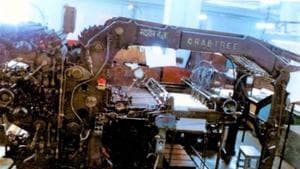
Updated on Nov 26, 2024 04:43 PM IST
Hindustan Times, Dehradun | Suparna Roy
Framers put forth a plural, secular basis for citizenship
The secular model of acquisition of citizenship served many objectives
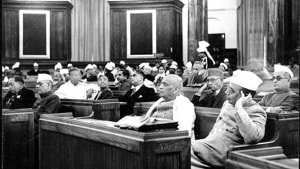
Updated on Nov 26, 2024 05:12 PM IST
Shadan Farasat
Constitution was the first canvas of modern masters
Each of 22 chapters of the document is headed by an illustration painstakingly crafted by Nandalal Bose and his team at Kala Bhavan in Santiniketan
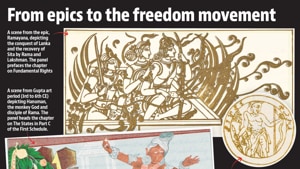
Updated on Nov 26, 2024 05:10 PM IST
Hindustan Times | Dhamini Ratnam
Greatest strength of India’s Constitution
The framers of our Constitution displayed remarkable foresight while drafting its amendment provisions.
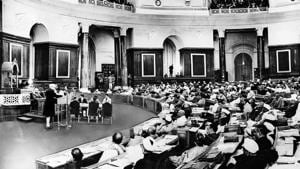
Updated on Nov 26, 2024 05:15 PM IST
Raju Ramachandran and Shankar Narayanan
People who steered India’s founding document
BR Ambedkar was the head of the drafting committee and India’s first law minister.
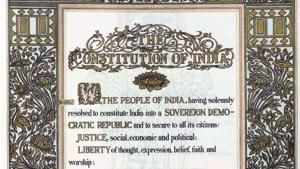
Updated on Nov 26, 2024 04:49 PM IST
New Delhi | HT Correspondent
BN Rau: An idealist and a staunch constitutionalist
In such accounts, the roles played by political leaders assumed importance, and the scope for recognising a bureaucrat like Rau remained severely limited.
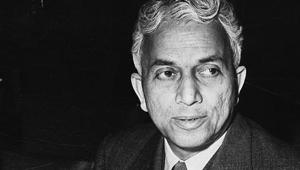
Updated on Nov 26, 2024 04:51 PM IST
Arvind Elangovan
15 remarkable women who helped shape India’s future
The demand for a body to form the Constitution was an old one but it was only in 1934 that the Congress adopted a resolution to create a Constituent Assembly
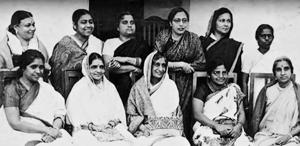
Updated on Nov 26, 2024 05:08 PM IST
Hindustan Times | Dhamini Ratnam and Dhrubo Jyoti
The man who chronicled Mahatma Gandhi
Mahadev Desai joined Gandhi at 25 as his secretary and maintained diaries that offer a rare insight into the mind of the most secular leader India has seen
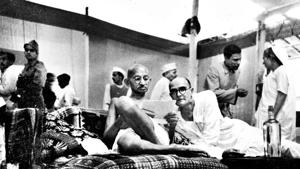
Updated on Oct 01, 2023 08:43 PM IST
Hindustan Times | Nachiketa Desai
Birla House: A visit to the Mahatma
Formerly the house of noted industrialist Ghanshyam Das Birla, the home where MK Gandhi spent his last 144 days is now a museum

Updated on Oct 01, 2020 08:00 PM IST
Hindustan Times, New Delhi | Dhrubo Jyoti
‘I kept feeling that Bapu would wake up any minute’: Tara Gandhi Bhattacharjee
Tara Gandhi Bhattacharjee spoke about her father’s stint in Hindustan Times, her grandparents, and the changing face of Delhi

Updated on Oct 01, 2023 09:00 PM IST
Hindustan Times, New Delhi | KumKum Dasgupta
A tribute to Mahatma Gandhi by Dr Martin Luther King, Jr
On January 30, 1958, Dr Martin Luther King, Jr, wrote an article for Hindustan Times on why India’s Father of the Nation belonged ‘to the ages’
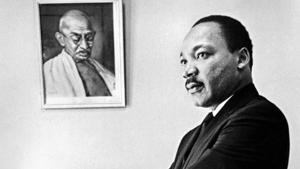
Updated on Oct 01, 2023 08:32 PM IST
Hindustan Times | Dr Martin Luther King, Jr
Hindustan Times and the Mahatma
When Gandhi inaugurated the Hindustan Times press in 1924, he knew it was time for a paper that reflected sentiments and the shared national agenda of Indians
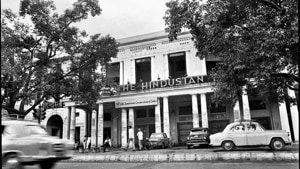
Updated on Oct 01, 2023 09:03 PM IST
Hindustan Times | Dhamini Ratnam
Essential reading on MK Gandhi
Swami Anand, who persistently urged Gandhi to write his autobiography, introduced the readers to sociological insights about castes and communities
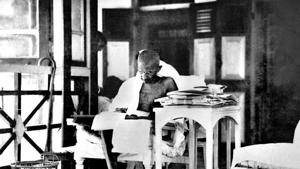
Updated on Oct 01, 2023 09:33 PM IST
Hindustan Times | Tridip Suhrud
A biographer’s journey: In search of the Mahatma
The Collected Works had all the known letters that Gandhi himself wrote; but virtually none of the letters that he received or responded to.
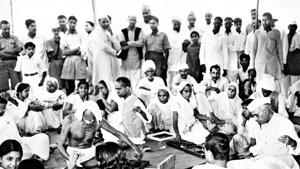
Updated on Oct 01, 2023 08:47 PM IST
Hindustan Times | Ramachandra Guha
Gandhi and Gujarat: At home and in self-imposed exile
The state was his birthplace and the site of his experiments with truth. But it must analyse its points of divergence from the Father of the Nation
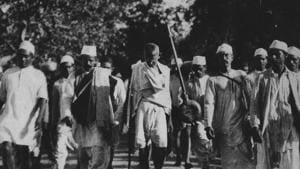
Updated on Oct 01, 2023 08:37 PM IST
Hindustan Times, New Delhi | Tridip Suhrud
Gandhi, Ambedkar and the 1932 Poona Pact
The 1931 Poona Pact shaped India’s Dalit political representation, and its implications are felt even in today’s parliamentary elections
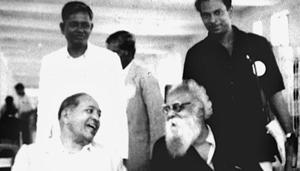
Updated on Oct 01, 2023 08:52 PM IST
Hindustan Times, New Delhi | Dhrubo Jyoti
A hyperlocal economic plan
The political consensus was that a newly independent India needed to rapidly industrialise. Instead, Mahatma Gandhi offered a radically different economic path
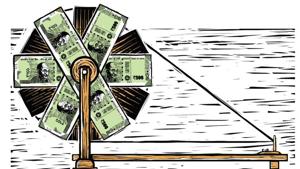
Updated on Oct 01, 2023 08:36 PM IST
Hindustan Times, New Delhi | Niranjan Rajadhyaksha
An experiment in Khadi, and Gandhi’s eastern base
History hangs thick in the air of the Gandhi ashram, as the place is known. A print of a letter written by Gandhi in 1928 adorns the wall next to the bed

Updated on Oct 01, 2023 09:40 PM IST
Hindustan Times | Snigdhendu Bhattacharya
1915-16: A tour of the homeland
Gandhi was advised by his mentor Gopalkrishna Gokhale — a freedom fighter who belonged to the ilk of Moderates within the Congress — to tour India for a year
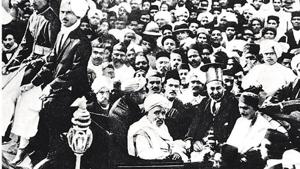
Updated on Oct 01, 2023 09:11 PM IST
Hindustan Times | Dhamini Ratnam
Growing up in Mahatma Gandhi’s Sevagram Ashram
In 1936, Gandhi decided to personally live and work in villages. He wanted to redirect the educated class in India towards villages.

Updated on Oct 01, 2023 09:19 PM IST
Hindustan Times | Abhay Bang
Learning to become a political activist
The debate on social media often ignores the changes Mahatma Gandhi went through in subsequent years when he sought to travel third class in trains

Updated on Oct 01, 2023 08:42 PM IST
Hindustan Times | Uma Dhupelia Mesthrie
The Mahatma’s Bengal connection
Bengalis have a complicated response to MK Gandhi. Some hold him responsible for the Partition; others question his treatment of Subhas Chandra Bose.

Updated on Oct 01, 2023 09:43 PM IST
Champaran: India’s first Satyagraha
Mahatma Gandhi’s swaraj meant self-sufficiency at the village level, dependent largely on agriculture
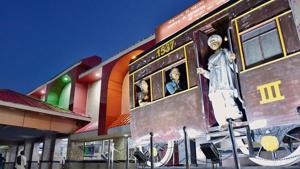
Updated on Oct 01, 2023 08:57 PM IST
Neyaz Farooquee





